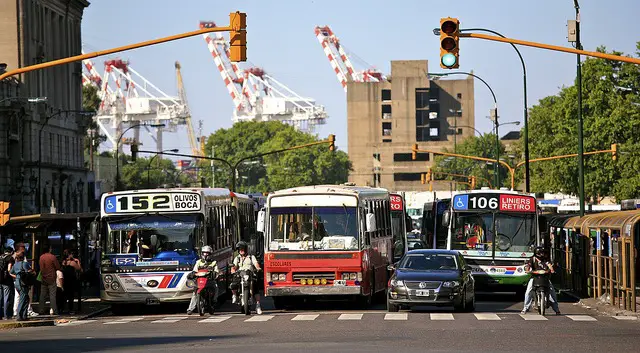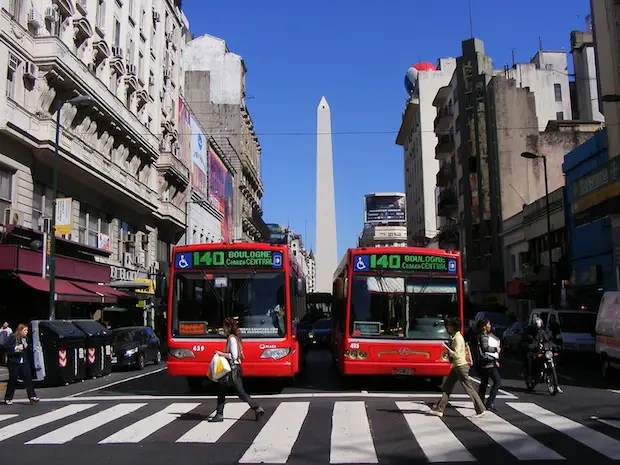Enhancing the Capacity for Innovation in 21st Century Cities
Innovation is a word we often hear these days, be it in the tech world or in meeting rooms at the office. It is a something that most companies, governments and individuals want to achieve but is often misunderstood and misinterpreted. In cases, it is associated with creativity, spontaneous thinking and lateral thinking. However, as This Big City learned during the Financial Times Citi Ingenuity Awards, innovation can arise from systemic thinking and structured programs that create spaces for individuals with that kind of thinking to thrive.
In essence, innovation becomes about offering access to people of any social background to develop to their fullest. Those spaces are, as Sir Michael Barber, Chief Educator Advisor at Pearson, puts it, the 21st Century metropolis. Not only are cities poised to become the setting where more than 75% of humans will live in the century to come, they are becoming centres par excellence for people around the globe to experiment and innovate in almost every field.
However, cities are diverse and not all of them attract the same people. Whereas London is a dynamic city with a mixed economy, Lagos is a megapolis with an economy directed towards the oil industry. Both cities are magnets of immigration, but they are differentiated by the infrastructure they provide, be it for transport, education, entrepreneurship, etc. It sets them years apart. For these reasons, not all cities enjoy the same conditions to produce the environments for innovation to thrive; Lagos may be plagued with people with brilliant ideas, but the tools to achieve their goals are more restricted than the ones found in London.
For this reason, the focus shifts towards creating leaders whose ambitions are to address exactly those issues. In this case, London and Lagos alike have to address the same thing: how to enhance spaces for innovation. Leadership comes from learning how to read the economic output, measuring the shifting centres of economic gravitational pull and being able to learn from others in order to avoid repeating mistakes.
Global leaders act upon all spheres of society from local communities, to district, regional and international. At the Financial Times Citi Ingenuity Awards, Barber offered a formula on how to create social innovators with global ambitions:
Well Educated=E (K+T+L)
This equation suggests that global leaders need to be well educated, with great Knowledge of the things that surrounds them. They need an awareness of how the areas they want to influence are developing, and the ability to Think critically when presented with problems. They must be willing to share ideas, and reflect upon conclusions. They have to have Leadership where they influence at macro, mezzo and micro levels and be aware of these different scales at all times.
All these variables add up to the big E, key for any leader: they have to be in touch with society’s ethical values, and there has to be an ethical element to their decision making at all times.
If leaders in cities have to have a keen sense of responsibility towards society where progress is driven by innovation, how do you plant the seeds for systemic innovation to happen? The answer lies in Education.
Education has been at the centre of every government agenda in the past years, however (and sadly enough) the West has seen high cuts in their education systems, which as a result is undermining its competitiveness to booming Asian nations whose priority in the last three decades has been heavy investment in education across all social sectors. To no surprise, when compared in international tables, Asian students are increasingly and rapidly out-ranking their Western counterparts. This is not a threat, but as put by one of the panellists, an opportunity to learn from successful education programs that are taking place in the East.
However, comparing systems can be tricky. Michael Mercieca, CEO of Young Enterprise, noted that as the East is developing, its structures offer more room for manoeuvre. The West, on the other hand, has a solid and strict system where introducing reforms can be sluggish, counterproductive and, in some cases, frustrating.
Therefore, to achieve programs that create innovators in a systemic and continuous way, there needs to be whole systems innovation where the system has to be rethought, repositioned with new strategies created. Such strategies need to be complimentary, allowing new ways to be mixed with traditional approaches.
Furthermore, much can be learnt from programs taking place elsewhere in the world. In Jordan, Soraya Salti, Senior Vice President of Mena, INJAZ, has designed programs to enhance entrepreneurship and innovation skills for lower income communities by forming strategic private public partnerships (PPPs); where funding comes mainly from private sector, the platforms are provided by government and the execution by individuals. Such programs are pushing for an overhaul in Jordan’s education system, towards integral and systemic innovation producing communities able to grow in a sustainable way.
Technology is a powerful contributor, yet practitioners remain divided on how to use it in educational environments. As Mark Cheng, UK director for Ashoka, reflects, it can be an enhancer as well as an obstacle. Thus technology can enhance capabilities of education systems only if they are approached inclusively to different sectors of society and where it can be within reach of the broader community. If not, technology can also marginalize lower income communities.
Technology has the capacity to enhance educational systems if they are open, dynamic and involve multi-directional collaboration with other agencies, nations, and institutions. For this to happen, well-educated leaders with a thirst to create more resourceful citizens that can propose and produce ideas are a must. As a result, spaces that serve as incubators can be born and cities become hubs for innovation, engaging citizens with a sense of responsibility towards their community and paving the way to construct resilient and sustainable communities.
As Bruno Lanvin, Executive Director at ISEAD put it: we have to TEACH!
T = Know how to read Trends around the world
E = Educate, develop projects, create doers and pave the way for a better living for future generations
A = Apply innovation, be is systemic, at small scale or implementing new technologies
C = Cities as hubs for all these conditions to take place
H = Retain Hope at all times to drive for better communities.


